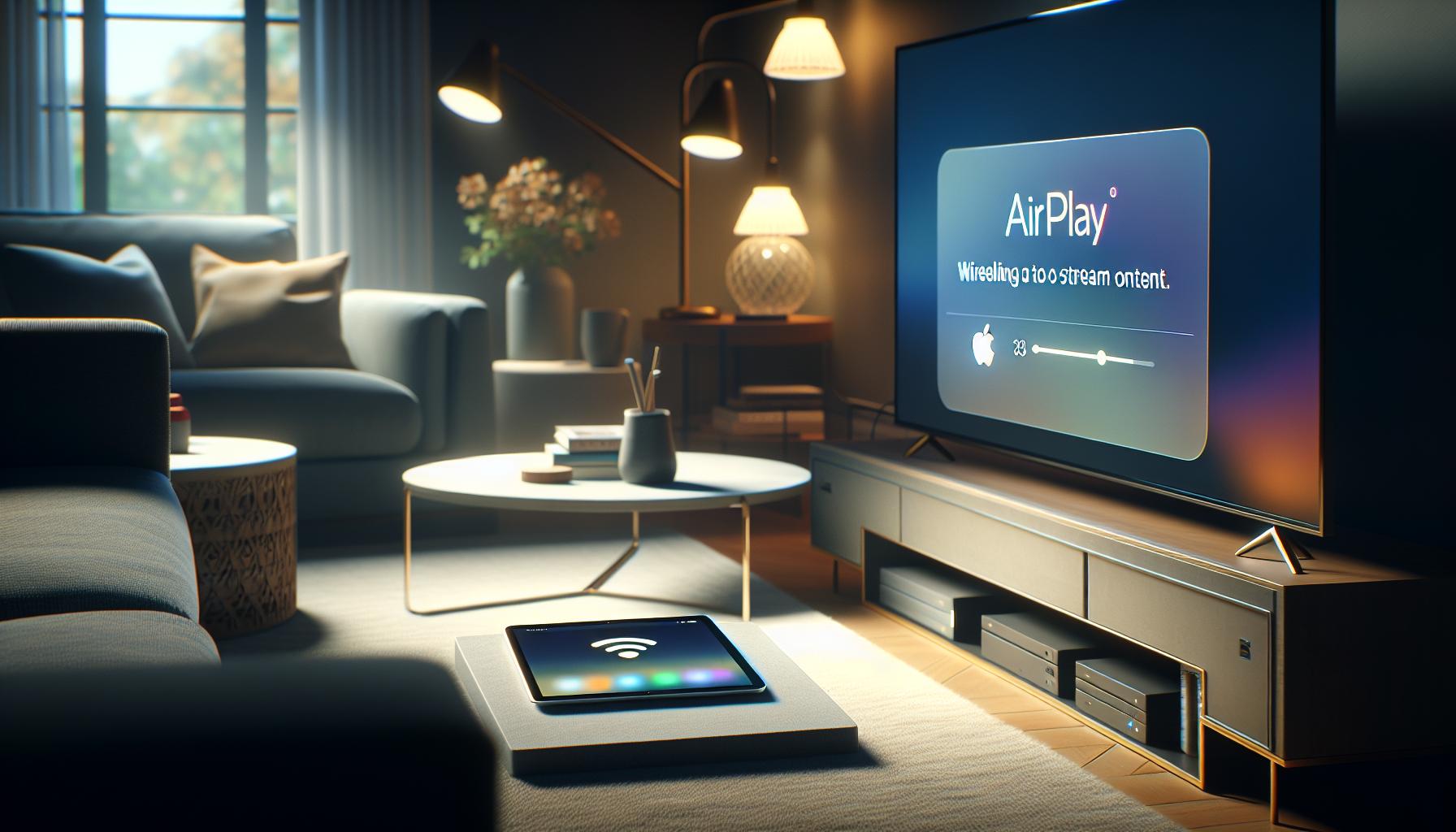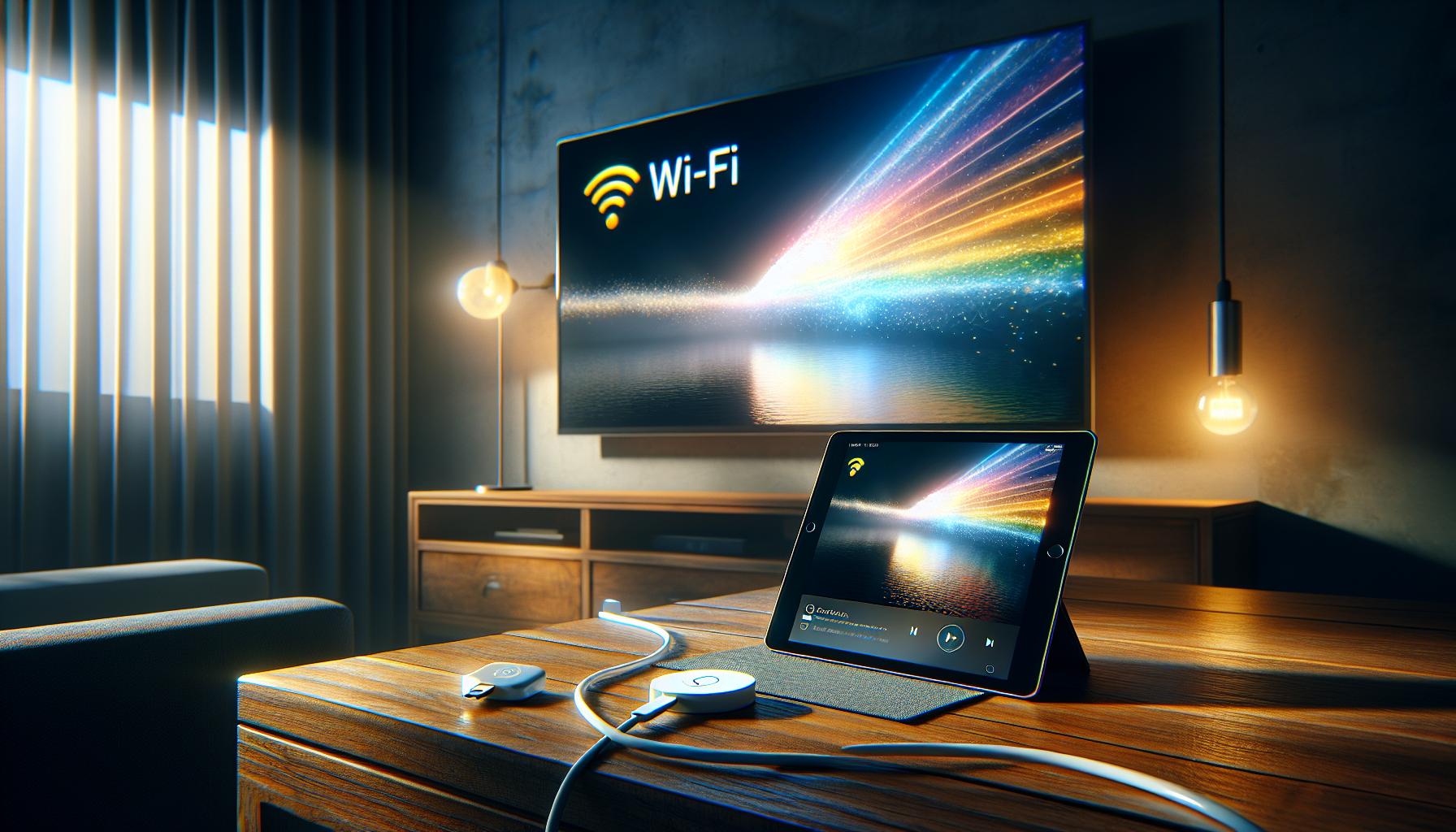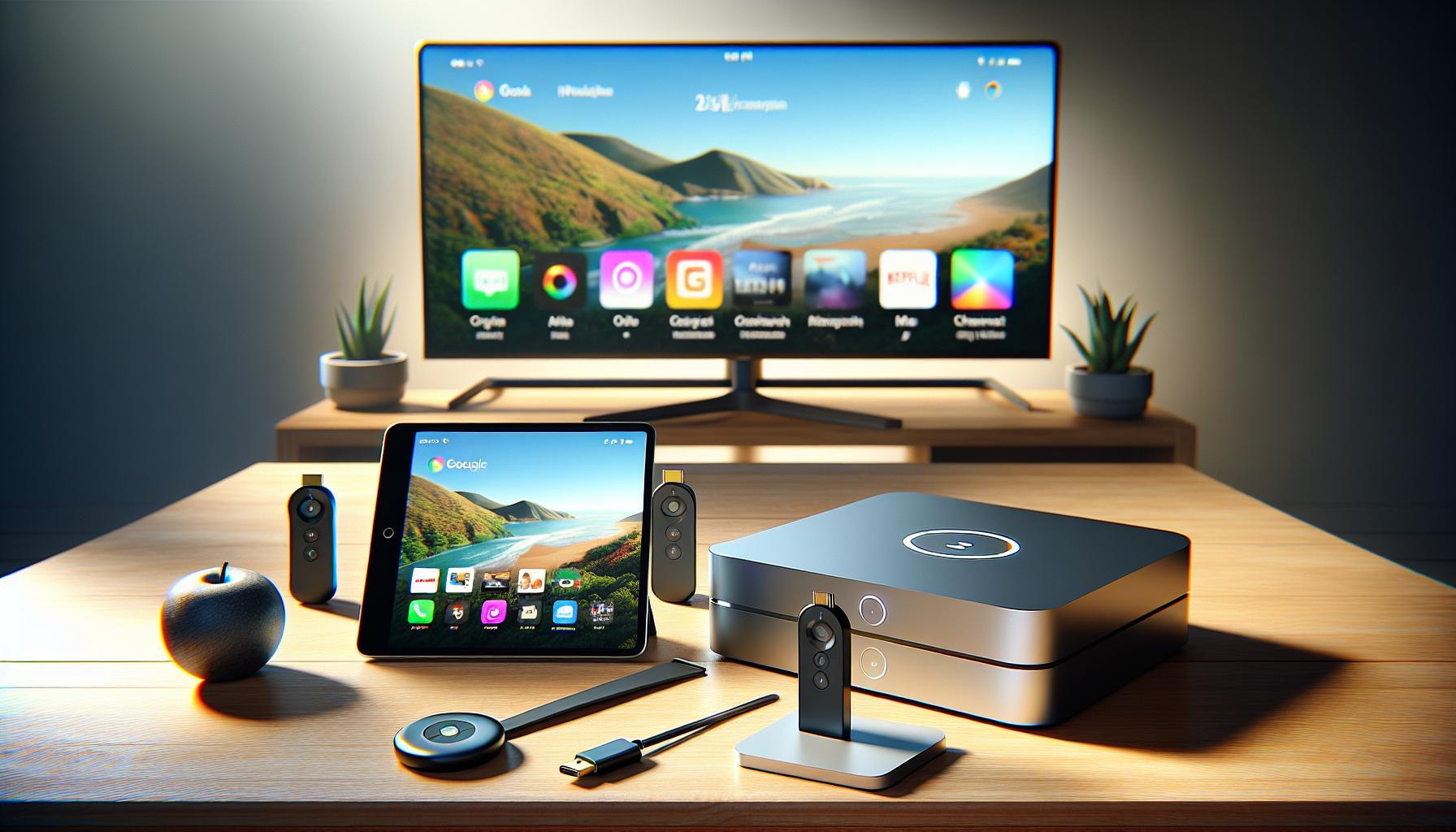Ever wished you could stream your favorite iPad content on the big screen, but don't have an Apple TV? You're in luck! It's totally possible, and easier than you might think. This guide will show you how to connect your iPad to your TV wirelessly without needing an Apple TV.
With the right tools and steps, you'll be able to enjoy movies, games, and more from your iPad on your TV. No wires, no fuss, just seamless streaming. So, let's dive in and explore how you can make this happen.
Remember, you don't need to be a tech whiz to get this done. You've got this! Let's get your iPad connected to your TV wirelessly.
Checking Compatibility
Before you dive headfirst into connecting your iPad to your TV wirelessly, it's crucial to first check the compatibility between your devices. You're probably wondering why. Well, not all iPads and TVs are created equal, so mismatched features could throw a wrench in your plans.
First things first, you'll want to verify the model of your iPad. If it's an iPad Pro, iPad Air 2, iPad mini 2, or later, good news: these models can all utilize the screen mirroring feature right out of the box. However, for earlier models, things might be a little tricky but don't worry, there are workarounds.
Next, turn your attention to your TV. Smart TVs usually come with built-in screencasting or mirroring capabilities. However, if you own a non-smart or older TV, you won't have this feature. And again, no need for panic, there are other ways to achieve this even if you don't own a smart TV.
You should also check whether your TV and iPad are running the latest version of their operating systems. This ensures that you are taking advantage of the newest features and bug fixes.
To wrap it up, let's help you compile a compatibility checklist. Here's a table to better explain this:
| Compatibility Aspects | Possible Solutions |
|---|---|
| iPad Model | iPad Pro, iPad Air 2, iPad Mini 2, or later can screen mirror. Earlier versions may need third party apps. |
| TV Model | Smart TVs can screen mirror. Non-smart / older TVs may need additional hardware like Chromecast, Roku, or Amazon Fire Stick. |
| Operating Systems | Both devices should run the latest OS for optimal performance. |
Now that you've understood the importance of checking compatibility, let's move ahead and explore the steps for connecting your devices.
Using AirPlay-compatible Apps

After you've made sure of your devices’ compatibility, the next step is to stream using AirPlay-compatible apps. You might be wondering, "What's an AirPlay-compatible app?" It's an app updated to use the second screen functionality of AirPlay. It allows your iPad to communicate and stream content to your smart TV.
Let's discuss the process of using these apps:
Start by launching your AirPlay-compatible app. The most common ones include Netflix, Hulu, and Amazon Prime Video. Open the video you want to stream. You'll notice an AirPlay icon usually located at the bottom of the screen. Simply tap this icon and a list of devices on your local network will appear.
Choose your TV from this list. The icon will turn blue, indicating that AirPlay is enabled. Your video will begin playing on your TV rather than your iPad. If the AirPlay icon does not appear or if it remains gray, this could indicate a problem with the connection or compatibility.
But before you start panicking, remember these troubleshooting tips:
- Check if both devices are connected to the same Wi-Fi network.
- Ensure your iPad and the smart TV have the most updated operating systems.
- Make sure your iPad is AirPlay enabled in the Control Center.
Success with AirPlay doesn't stop with video. You can also mirror the iPad screen on your TV or use your TV as an oversize monitor for iPad games. With AirPlay-compatible apps, your watch parties or game nights could reach a whole new level of fun and play.
By following these steps, you can make the most out of your compatible devices and apps, and start streaming your favorite shows and videos without the need for Apple TV.
Mirroring Your iPad Screen
Let's dig deeper into how AirPlay creates a spectacular viewing experience on your smart TV. Moving beyond simply streaming content, you're about to unlock the potential of using your TV as an oversized iPad screen. This technique, commonly known as screen mirroring, is ideal for both work presentations and high-paced gaming sessions.
Configuring your iPad for screen mirroring couldn't be more straightforward. Firstly, make sure the TV and the iPad are hooked into the same Wi-Fi network. Swipe down from the upper right corner of your iPad to access the Control Center. Here, you'll find the Screen Mirroring icon, usually right next to the AirPlay button. Click on it and you'll see a list of all available devices. You should see your smart TV listed here: select your TV and bingo! Your iPad screen is mirrored onto your TV.
If your TV isn't listed, don't worry. Reconnect both your TV and iPad to the Wi-Fi network, and make sure that AirPlay is turned on for your smart TV. Remember, your TV should be AirPlay-compatible to successfully mirror your iPad.
Creating this wireless connection between your iPad and TV opens up a whole new world of possibilities. Your TV becomes your larger-than-life iPad, providing an immersive experience for movies, games, or any app on your iPad. The visual spectacle truly comes to life when playing high-graphics video games, making this feature a gamer's paradise.
Now that you're familiar with the steps to mirror your iPad screen, go ahead and try it out. With a bit of practice, you'll be a professional in no time. Know that there's no limit to the number of devices you can mirror, offering fantastic flexibility and versatility for multi-screen setups.
Remember, the key to seamless streaming is a steady internet connection and an AirPlay-compatible smart TV. While this nifty tool does most of the work for you, it's worthwhile to keep these simple tips handy to elevate your viewing experience.
Using HDMI Adapter and Dongle
Let's consider an alternative method if you don't have an Apple TV. This involves the use of an HDMI adapter and a dongle. It might sound a bit technical but let's break it down for you.
Firstly, understand that a HDMI adapter is a device that can connect your iPad to your TV via an HDMI cable. The adapter plugs into your iPad's charging port and has an HDMI outlet where you can connect your HDMI cable. On the other hand, a dongle is a small device that plugs into your TV and receives signal from your iPad via Wi-Fi.
Start by plugging your HDMI adapter into your iPad's charging port. Next, connect one end of your HDMI cable to the adapter and the other to a free HDMI port on your TV. Ensure you note the HDMI input number as you'll need it to switch your TV's view.
With the cable set up, you'll now need to use a dongle. There's an array of dongles available in the market but remember to choose one that's compatible with your iPad. Google Chromecast is a popular, compatible, and fairly priced option.
To set up the dongle, first connect it to an available USB port on your TV. Switch your TV to the HDMI input where your dongle is connected. Make sure your dongle and iPad are connected to the same Wi-Fi network. You should be able to mirror your iPad to your TV after this.
The HDMI adapter and dongle option offers a stable connection. Interference is less likely as the data is transmitted via a wired HDMI cable. The dongle is also a one-time investment. You can use it with different devices or even different TVs, offering a lot more flexibility.
So, ready to give this a go? With these step-by-step procedures, connecting your iPad to the TV should be a breeze. Let's move on to explore more.
Streaming via Chromecast

Stepping into the realm of Chromecast can open up a world of streaming possibilities for your iPad. The Chromecast dongle is a cost-effective and highly flexible tool you won't regret adding to your tech arsenal.
Remember when we talked about mirroring your iPad screen onto your smart TV using an HDMI adapter? Well, Google's Chromecast dongle follows a similar process but does it wirelessly. Meaning, no extra cables cluttering your space. It's always a welcome bonus, right?
To get started, make sure your iPad, Chromecast, and the TV are all connected to the same Wi-Fi network.
- Download the Google Home app from Apple's app store.
- Launch the app.
- Find and select your Chromecast device from the list.
You're one tap away from casting your iPad screen onto the TV.
- Open the control center by swiping down from the top right corner of your iPad screen.
- Tap on "Screen Mirroring".
- Select your Chromecast device from the list.
You see, no hassle of wires or worry about compatible ports.
If you're a Netflix or YouTube enthusiast, it gets even better. With Chromecast, you don't even need to mirror your entire iPad screen. You can cast specific apps directly to your TV. Simply open your chosen app, tap the Cast icon, and select your Chromecast-enabled TV. Enjoy your favorite shows on the big screen while still having the freedom to use your iPad.
Embracing Chromecast for streaming from your iPad onto your TV is indeed a smart move. This method not only provides a stable connection but boasts an impressive compatibility range. Irrespective of whether your device is new or old, Chromecast is flexibility itself. It won't disappoint you.
Remember to always keep your device software updated for an optimal user experience. An out-dated software can lead to glitches, lags, and altogether fails to provide the smooth, high-definition streaming experience Chromecast is capable of.
Having considered all, it's clear that with a bit of preparation and the right tools in hand, streaming from your iPad to your TV can indeed be a breeze. As you get more comfortable with this approach, you'll find numerous ways to make the most of your screen mirroring experience with Chromecast. So, why not try it out?
Conclusion
So there you have it. You've discovered how to seamlessly connect your iPad to your TV wirelessly without the need for Apple TV. By leveraging the power of Google's Chromecast dongle, you can now enjoy your favorite apps and shows on the big screen. It's not just about mirroring your iPad's display, but also about the flexibility and stability Chromecast offers. It's a simple, efficient, and cost-effective solution. So why wait? Give it a try and enhance your viewing experience today. Remember, the world of wireless streaming is at your fingertips, and it's easier than you might think.
Q1: What is the main method discussed for mirroring the iPad screen on a smart TV?
The article focuses on using Google's Chromecast dongle for mirroring the iPad screen on a smart TV.
Q2: What are the steps in setting up Chromecast mentioned in the article?
The steps include downloading the Google Home app, connecting the iPad, Chromecast, and TV to the same Wi-Fi network, and selecting the Chromecast device in the app.
Q3: What benefits are highlighted for using Chromecast?
The benefits of Chromecast are wireless streaming without extra cables and the ability to cast specific apps directly to the TV.
Q4: What does the article comment on the stability and compatibility of Chromecast?
The article emphasizes the impressive stability and compatibility of Chromecast with other devices.
Q5: What does the article recommend by the end?
The article concludes by encouraging readers to try streaming from their iPad to their TV using Chromecast.




